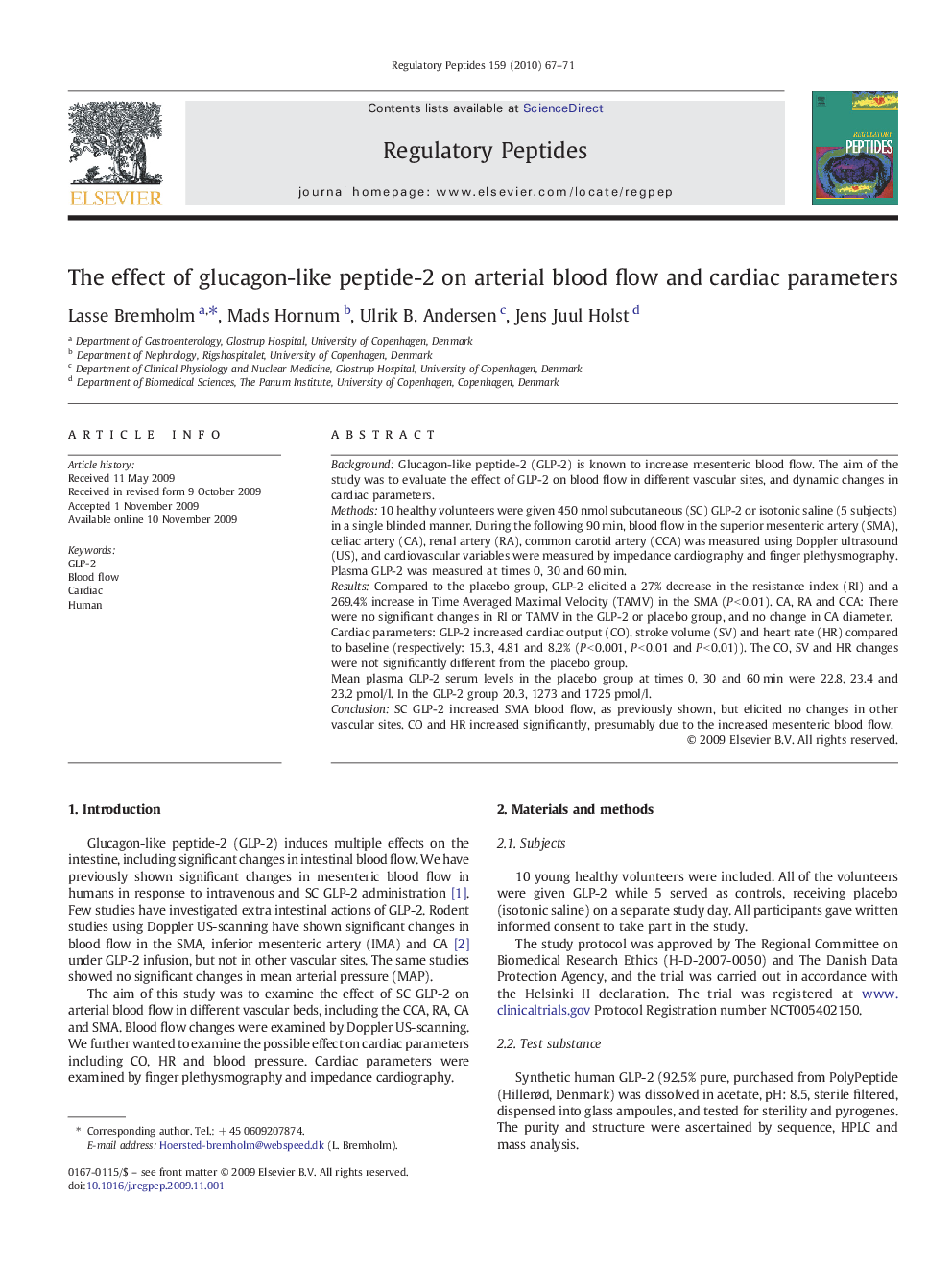| Article ID | Journal | Published Year | Pages | File Type |
|---|---|---|---|---|
| 2022975 | Regulatory Peptides | 2010 | 5 Pages |
BackgroundGlucagon-like peptide-2 (GLP-2) is known to increase mesenteric blood flow. The aim of the study was to evaluate the effect of GLP-2 on blood flow in different vascular sites, and dynamic changes in cardiac parameters.Methods10 healthy volunteers were given 450 nmol subcutaneous (SC) GLP-2 or isotonic saline (5 subjects) in a single blinded manner. During the following 90 min, blood flow in the superior mesenteric artery (SMA), celiac artery (CA), renal artery (RA), common carotid artery (CCA) was measured using Doppler ultrasound (US), and cardiovascular variables were measured by impedance cardiography and finger plethysmography. Plasma GLP-2 was measured at times 0, 30 and 60 min.ResultsCompared to the placebo group, GLP-2 elicited a 27% decrease in the resistance index (RI) and a 269.4% increase in Time Averaged Maximal Velocity (TAMV) in the SMA (P < 0.01). CA, RA and CCA: There were no significant changes in RI or TAMV in the GLP-2 or placebo group, and no change in CA diameter.Cardiac parameters: GLP-2 increased cardiac output (CO), stroke volume (SV) and heart rate (HR) compared to baseline (respectively: 15.3, 4.81 and 8.2% (P < 0.001, P < 0.01 and P < 0.01)). The CO, SV and HR changes were not significantly different from the placebo group.Mean plasma GLP-2 serum levels in the placebo group at times 0, 30 and 60 min were 22.8, 23.4 and 23.2 pmol/l. In the GLP-2 group 20.3, 1273 and 1725 pmol/l.ConclusionSC GLP-2 increased SMA blood flow, as previously shown, but elicited no changes in other vascular sites. CO and HR increased significantly, presumably due to the increased mesenteric blood flow.
